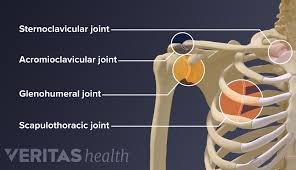Enhancing Ankle, Hip, and Shoulder Mobility: A Comprehensive Guide
Movement lies at the core of our human experience. The capacity and efficacy of our physical movements dictate our ability to engage fully with the world around us. Joints serve as pivotal components in our mobility, and recovering from injuries or chronic discomfort often presents distinct challenges in terms of maintaining mobility.
Elevating ankle, hip, and shoulder mobility through targeted daily exercises and stretches stands as one of the most effective methods to bolster overall flexibility and ward off potential injuries. Additionally, various strategies exist to augment mobility in these key areas:
Fascial Stretch Therapy
Massage Therapy
Cupping Therapy
Thermal Therapy
In today's increasingly sedentary world, prioritizing mobility has never been more crucial. Whether you're recuperating from an injury, an athlete striving for peak performance, or simply dedicated to your physical well-being, enhancing mobility is essential for sustaining an active lifestyle and safeguarding against injuries.
Unlocking the Potential: Understanding Ankle, Hip, and Shoulder Mobility
The ankle joint, a fusion of the tibia, fibula, and talus bones, acts as the nexus between the foot and the leg. It facilitates dorsiflexion (raising the top of the foot towards the shin) and plantar flexion (pointing the foot downwards).
Ankle Joint
Meanwhile, the hip joint operates as a ball-and-socket arrangement, formed by the convergence of the femur and the pelvis. Its expansive range of motion underpins activities such as walking, running, jumping, and a myriad of lower-body exercises.
Hip Joint
Conversely, the shoulder joint, the body's most adaptable joint, arises from the interplay among the humerus, scapula, and clavicle bones. Its versatility proves indispensable for upper body strength and functional movements.
Shoulder Joint
Each of these joints remains susceptible to various issues that can impede mobility. Common afflictions include sprains and strains in the ankle, osteoarthritis and bursitis in the hip, and a range of maladies from rotator cuff tears to frozen shoulder syndrome in the shoulder, all of which can significantly curtail movement.
The Ramifications of Diminished Mobility
While discussions surrounding mobility often center on seniors, this issue transcends age barriers, affecting individuals across the lifespan. Day-to-day mobility challenges can manifest as:
Impaired balance
Sluggish movements
Difficulty ascending stairs
Inability to execute basic exercises
Over time, restricted range of motion can precipitate muscle imbalances, heightening the risk of falls and musculoskeletal injuries. Moreover, it may elevate the likelihood of chronic back pain, knee ailments, and shoulder complications, posing formidable obstacles to sustaining an active lifestyle.
Shoulder mobility and stretching is key for shoulder and pain quality of life
Strategies for Enhancing Mobility
Elevating mobility demands time and dedication. Transformations won’t materialize overnight, but initiating the journey represents the inaugural stride towards holistic well-being. With the guidance of seasoned physical therapists, individuals can navigate the path to improved mobility in a secure and methodical manner.
Fascial Stretch Therapy (FST): A Gateway to Enhanced Mobility
Fascial stretch therapy (FST) heralds a distinctive approach to augmenting mobility, targeting the fascia—a resilient tissue enveloping and intertwining all bodily muscles and organs. This assisted stretching modality concentrates on elongating, realigning, and restructuring the fascia, fostering smoother movement and heightened flexibility.
Given that fascia interconnects and envelops all bodily structures, tension or rigidity in one region can reverberate throughout the body, impeding mobility elsewhere. FST mitigates these imbalances through gentle, synchronized stretching maneuvers that penetrate deep within the fascial matrix.
By zeroing in on the fascia, rather than solely the muscles, FST facilitates the release of impediments, alleviation of discomfort, and expansion of range of motion. Collectively, this paves the way for reinstating the body’s innate fluidity of movement and enhancing overall mobility in the ankles, hips, and shoulders.
Massage Therapy: A Catalyst for Flexibility
Massage therapy emerges as another potent tool for fortifying flexibility and fostering mobility. By manipulating the body’s soft tissues—including muscles, connective tissues, tendons, ligaments, and skin—massage therapy stimulates increased blood circulation to targeted regions, thereby mitigating muscle rigidity and inducing relaxation.
Regular massage sessions can markedly expedite the restoration of muscle elasticity, thereby enhancing joint mobility and curtailing injury risks.
Cupping Massage Therapy: Amplifying Mobility
Cupping massage therapy stands as an additional modality to amplify mobility. This ancient practice involves placing cups on the skin to create suction, which promotes increased blood flow to the designated areas. The suction effect also aids in loosening fascial restrictions, releasing tight muscles, and reducing inflammation, thereby enhancing overall mobility.
The negative pressure generated by cupping massage therapy draws stagnant blood and toxins to the skin's surface, facilitating their elimination from the body. This detoxification process can alleviate muscle soreness and stiffness, contributing to improved joint mobility and range of motion.
Thermal Therapy: Harnessing the Power of Temperature
Both ends of the temperature spectrum have long served as allies in the realm of physical recuperation. The optimal choice—heat or cold therapy—hinges on individual needs:
Heat therapy bolsters blood circulation to designated sites, promoting muscle relaxation, alleviating stiffness, and fostering expanded range of motion.
Conversely, cold therapy curtails blood flow to specific locales, substantially reducing inflammation and swelling responsible for pain. Some evidence suggests that cold therapy can ameliorate joint function in individuals grappling with arthritis.
Embracing Wellness Through Restoration
Integrating mobility work into daily routines necessitates commitment, yet need not be overly time-intensive or daunting. Moreover, it’s imperative to recognize that rest constitutes a pivotal component of any mobility regimen, affording the body requisite time to adapt and rejuvenate.
Consider incorporating stretches into morning or evening rituals and punctuating prolonged periods of sitting with brief exercise interludes throughout the day. Remember, mobility embodies a continuum, and incremental, sustained efforts can yield noteworthy strides in overall functionality.
For those poised to embark on their mobility enhancement journey, contemplating a treatment session at Flex and Flow Massage may prove illuminating. We’re steadfastly committed to empowering individuals of all proficiency levels to expand their range of motion and enhance their quality of life. Commence your mobility metamorphosis today, and revel in the newfound vistas of movement awaiting you.





